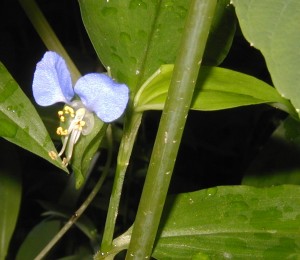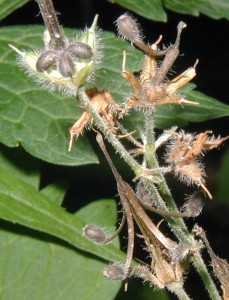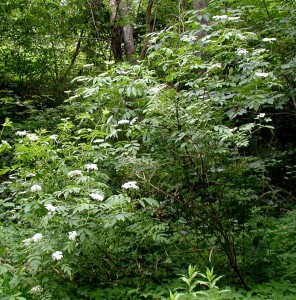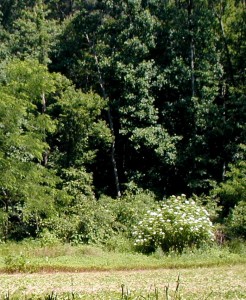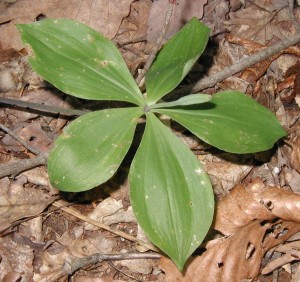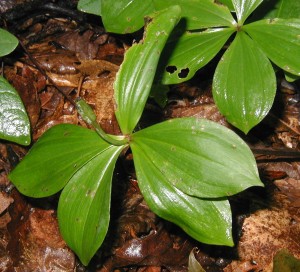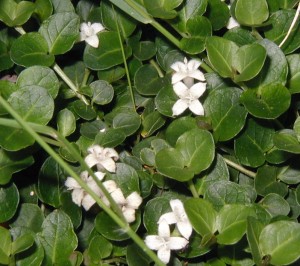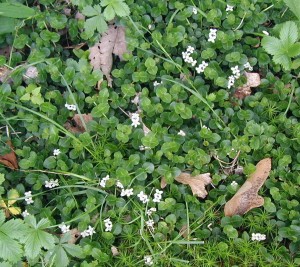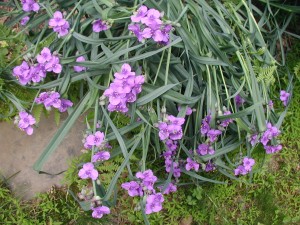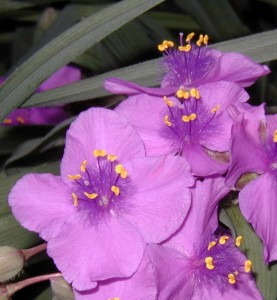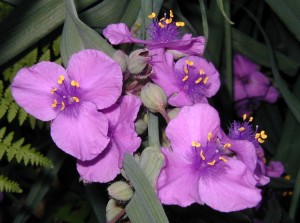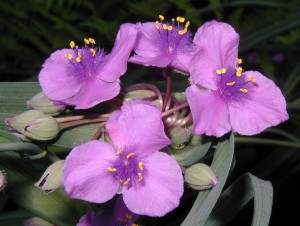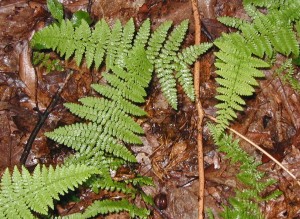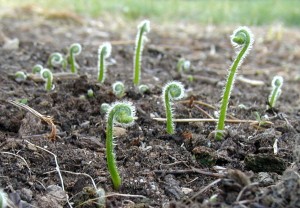Mayapple, or American Mandrake, is one of those interesting plants that is easy to recognize because of its uniqueness. No other plant looks quite like the umbrella plant, does it? One or two deeply cut leaves have an overall round shape with a truly variegated edge. No two leaves seem to be alike, yet they are similar.
Appropriately named Mayapple, Podophyllum peltatum, starts blooming in the beginning of May. A single large white flower about two inches across blooms underneath the cover of one or two large leaves. The leaves seem to protect the flowers kind of like an umbrella. Check out some nice photos of Mayapple flowers in an earlier post about this native woodland plant.
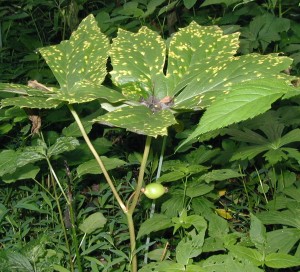
Photo above taken 6 June 2010.
A single ripening fruit juts out from between the fork of two Mayapple leaves. I’m not sure what blight caused the yellow spots on the leaves of this Mayapple, but when the foliage is dying back it sometimes happens. Into July we can find mayapples turning yellow even though much of the foliage has already withered away.
The fruit is edible and can be enjoyed as a refreshing cold drink. One year I picked a handful of yellow fruit, cut them up and squeezed out the liquid in to a glass of ice cubes. I expected more of a citrus taste as Peterson’s Edible Plant Guide suggested the juice could be added to lemonade. Without sugar it would have been too tart and bland at the same time. At the very least Mayapple fruits are a survival food packed with vitamin C.

